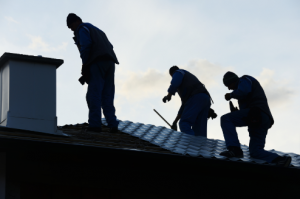Checklist for Home Roof Designs and Projects
The roof is a critical component of any home, providing shelter, security, and aesthetic appeal. When embarking on a roof design or renovation project, it’s essential to have a comprehensive checklist to guide your planning and execution. A well-planned roof design not only enhances curb appeal but also plays a significant role in energy efficiency, durability, and overall property value. Factors such as material selection, structural integrity, insulation, and ventilation must be carefully evaluated to achieve a long-lasting and functional roof. Homeowners should also consider their local climate, as weather conditions heavily influence the best roofing materials and construction techniques. For example, homes in regions with heavy snowfall require sturdy, sloped roofs that can support added weight, while those in hot climates benefit from reflective materials that minimize heat absorption.
Beyond functionality, aesthetics should not be overlooked. A roof’s color, shape, and style should complement the architectural design of the home. Whether you’re opting for classic shingles, modern metal roofing, or eco-friendly green roofing solutions, selecting the right design can significantly impact your home’s overall appearance. Additionally, integrating sustainable features such as solar panels or rainwater collection systems can further enhance efficiency and long-term savings.
Before starting any project, budgeting and permitting considerations are crucial. Homeowners must account for material costs, labor, and potential unforeseen expenses. Consulting with professional roofers and understanding local building codes will help prevent costly mistakes and delays. This checklist will walk you through every step of the process, from choosing the right materials to ensuring proper installation and maintenance.
What Are the Most Popular Types of Home Roof Designs?

Home roof designs vary significantly, offering a range of options for aesthetics and functionality. Styles like gable, hip, and mansard are commonly sought after by homeowners who value both form and function. A new home construction company can assist you in selecting a roof design that complements your home’s architecture and meets your specific needs.
The gable roof, recognized by its triangular shape, is one of the most popular home roof designs because of its simplicity. Hip roofs, with their slopes on all sides, provide excellent stability and are more resistant to high winds. Mansard roofs, known for their distinctive French style, offer additional living space and a unique aesthetic.
Collaborating with professionals can ensure you choose a style that integrates well with the local climate and your home’s structural integrity. Expert input is crucial to aligning the roof style with not just aesthetic preferences, but also functional requirements. A well-chosen design can greatly enhance your home’s overall appearance and resale value.
How to Choose the Right Roofing Material?
Choosing the right roofing material is crucial for the longevity and performance of your home roof designs. Options abound, such as asphalt shingles, metal roofing, and slate, each with its advantages. Consulting with an electrical construction company might be useful, especially if you are considering solar panel installations integrated with your roof.
Asphalt shingles are cost-effective and suitable for a variety of roof styles, making them a popular choice for residential roofs. Metals, such as aluminum and steel, provide durability and are a sustainable option due to their recyclability. Slate, while more expensive, offers unparalleled aesthetics and longevity.
Your choice should be influenced by factors such as the local climate, budget, and long-term performance expectations. Understanding the interplay between roofing material and the architectural style of your home is essential for a harmonious design. Engaging with foundation contractors can also provide insights into how roofing choices affect the structural aspects of your home.
What Are the Cost Considerations for Roof Projects?
Cost considerations are paramount when planning and executing home roof designs. The type of material, labor, and additional factors like permits or removal of the old roof all contribute to the overall cost. Collaborating with foundation contractors ensures that your roof project remains within budget while maintaining quality and durability.
Budgeting for your roof project requires detailed planning and an understanding of the full scope, including potential unforeseen expenses. Premium materials like slate and metal come with higher upfront costs but offer superior longevity and durability. On the other hand, asphalt offers more affordability, making it a popular choice for those with budget constraints.
Investment in quality materials and qualified professionals will safeguard against future replacement or repair costs. Transparent estimates provided by reputable professionals offer peace of mind and financial predictability. Many homeowners find that the initial investment in a quality roof pays off in reduced maintenance and enhanced home value.
How to Ensure Proper Roof Ventilation?

Proper ventilation is a critical component of effective home roof designs, influencing both the performance and longevity of the roof. Ventilation allows for the circulation of air within your roof space, preventing moisture build-up and potential damage. Speaking with concrete contractors can offer additional insights if your roof project involves related structural changes.
Ventilation systems such as ridge vents, soffit vents, and gable vents can be strategically installed to facilitate airflow. These systems play a vital role in regulating temperature and moisture, especially in regions with extreme weather conditions. Implementing adequate ventilation reduces the risk of mold growth and structural rot.
Without proper ventilation, a roof’s lifespan can be significantly shortened due to trapped moisture and overheated materials. Enlisting the help of professionals ensures that ventilation systems are correctly installed and tailored to your specific roof design. Optimized ventilation contributes to energy efficiency by maintaining balanced interior temperatures.
What Are the Best Practices for Roof Insulation?
Insulation is a key factor in maximizing the energy efficiency of your home and the effectiveness of your home roof designs. Proper insulation helps regulate your home’s internal temperature, reducing energy costs, and improving comfort. When considering insulation, connect with carport construction experts who understand integration with existing structures.
Quality insulation materials, including fiberglass and cellulose, are installed to create a thermal barrier between the roof and living spaces. These materials vary in effectiveness, cost, and environmental impact, each providing unique benefits. Fiberglass, for example, is widely used for its affordability and ease of installation.
Attention to detail during insulation can help avoid issues such as moisture build-up and inconsistent room temperatures. Effective insulation contributes not only to cost savings but also to an eco-friendlier home by reducing reliance on heating and cooling systems. Professionals with experience in home roof designs ensure the selection and installation of the right insulation for your needs.
How to Assess and Improve Roof Durability?
Roof durability is a priority for homeowners aiming to safeguard their investments in home roof designs. Regular assessments and maintenance play crucial roles in extending the life of a roof. In collaboration with asphalt paving professionals, enhance your property’s resilience by ensuring that both the roof and surrounding structures are in excellent condition.
Materials such as metal and clay tiles are known for their longevity, offering excellent resistance against the elements. However, nearly all roofing materials benefit from consistent evaluations and timely repairs to maintain integrity. It’s also important that any roof additions, like skylights or solar panels, are well-integrated into the primary roofing system.
Routine inspections by certified professionals can help identify potential problems before they escalate into costly repairs. Proactive measures, including sealing leaks, replacing damaged shingles, and clearing debris, enhance roof durability. Choosing quality materials and ensuring correct installation are preventative steps that support the longevity of your home roof designs.
What Are the Common Mistakes to Avoid in Roof Design?

Errors in home roof designs can lead to costly repairs, reduced lifespan, and diminished performance. A frequent mistake is neglecting the local climate’s impact on roofing material choice and structural requirements. Home additions, like attics or dormers, must be properly planned and executed to avoid compromising the roof’s integrity.
Improper installation by unqualified individuals often results in roofing issues such as leaks or inadequate insulation. This can significantly affect energy efficiency and lead to unnecessary expenses. Another common pitfall is ignoring the importance of routine roof inspections and timely repairs.
Using low-quality materials to cut initial costs can result in higher expenses over time due to frequent maintenance and replacements. Hiring experienced professionals ensures adherence to industry standards and a reduction in common roofing mistakes. A well-executed roof design merges functionality with artistic flair, providing lasting satisfaction and utility.
How to Ensure Roof Safety and Regulations Compliance?
Safety and compliance are critical elements of any home roof design project, ensuring both the legality and viability of the structure. Adhering to local building codes and regulations is essential, requiring collaboration with experienced contractors knowledgeable in these areas. Fence installers and other structural experts can provide additional insights on property boundaries and safety considerations.
Failing to comply with local regulations can result in fines, forced modifications, or even the need to dismantle your newly installed roof. Safety protocols during installation protect not only the workers but also the integrity of your home. Securing proper permits and conducting necessary inspections are part of a compliant roofing project.
Qualified professionals prioritize safety and regulation adherence to ensure your project not only looks good but is also legally sound. Compliance with regulations secures not only the safety and structural integrity of a roof but also the overall value of the property. Proactively addressing these elements avoids future complications and maintains a safe living environment.
What Maintenance Practices Should Be Followed for Longevity?
Regular maintenance is imperative to preserve the functionality and appearance of home roof designs. Routine inspections, cleaning, and minor repairs all extend the lifespan and performance of the roof. Services such as tree services and power washing can aid in maintaining a clean and damage-free roof environment.
Inspect your roof biannually and after major storms, ensuring that there are no loose or damaged shingles. Clearing debris like leaves and branches helps prevent water pooling and potential damage. Timely maintenance prevents minor issues from escalating into major problems that require costly repairs.
A proactive approach to maintenance, coupled with professional guidance, maximizes the investment in your roofing project. Engaging professionals for regular assessments assures the application of best practices tailored to your specific home roof designs. Routine care enhances the structural integrity and appearance of your home, preserving its value and comfort.
How to Select a Roofing Contractor?

Selecting a competent roofing contractor is critical to the success of your home roof design project. A good start is to seek recommendations from trusted sources or conduct online research for reputable professionals. A power washing service, for example, may have connections to trustworthy roofing experts.
When reviewing potential contractors, evaluate their credentials, experience, and portfolio of previous work. Consider factors like their familiarity with local climate conditions and building codes. Reliable contractors provide transparency in cost projections and timelines, fostering a trustworthy and productive partnership.
Conduct interviews with shortlisted contractors to gauge their communication style and commitment to quality. You want professionals who are dedicated to both artistry and efficiency. Careful contractor selection significantly impacts the success and satisfaction of your home roof designs, ensuring seamless execution and expert results.
Using This Home Roof Designs Checklist
Designing and implementing a new roof for your home involves many important decisions. By understanding the various types of roof designs, materials, and considerations, you can make informed decisions that combine aesthetics, functionality, and durability. Utilize this checklist to ensure a successful home roof design and project outcome. Engaging with knowledgeable professionals like new home construction companies, electrical construction companies, and foundation contractors provides invaluable guidance. These experts not only enhance the project’s efficiency but also help align your roofing project with long-term objectives. Adequate planning, informed choices, and careful implementation contribute to a roof that delivers protection, beauty, and value to your home.
Additionally, ongoing maintenance and regular inspections are key to extending the lifespan of your roof. Checking for signs of wear, addressing minor repairs promptly, and ensuring proper drainage can prevent costly damage down the line. If you’re considering future home upgrades, integrating energy-efficient roofing materials or solar panels can improve sustainability and lower utility costs. A well-executed roofing project not only safeguards your investment but also enhances the overall comfort and efficiency of your living space.








